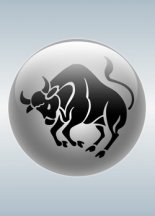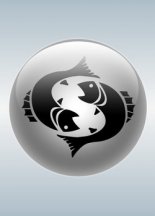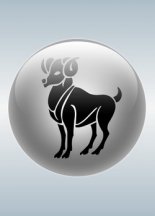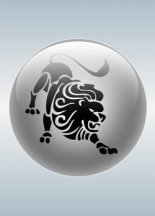Английский язык для медиков: конспект лекций Кош Алекс
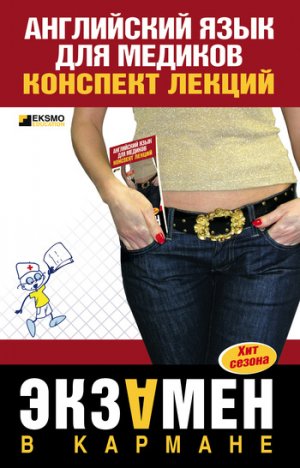
2) a) strong; b)weak; c) powerful;
3) a) water; b)rain; c)steam;
4) a) wind; b) storm; c) easy;
5) a) hot; b)sun; c) winter.
ЛЕКЦИЯ № 8. Muskular system
Skeletal (voluntary) system.
The dermomyotome further differentiates into the myotome and the dermatome.
Cells of the myotome migrate ventrally to surround the intraembry-onic coelom and the somatic mesoderm of the ventrolateral body wall. These myoblasts elongate, become spindle-shaped, and fuse to form multinucleated muscle fibers.
Myofibrils appear in the cytoplasm, and, by the third month, cross-striations appear. Individual muscle fibers increase in diameter as myofibrils multiply and become arranged in groups surrounded by mesenchyme.
Individual muscles form, as well as tendons that connect muscle to bone.
Trunk musculature: By the end of the fifth week, body-wall musculature divides into a dorsal epimere, supplied by the dorsal primary ramus of the spinal nerve, and a ventral hypomere, supplied by the ventral primary ramus.
Epimere muscles form the extensor muscles of the vertebral column, and hypomere muscles give rise to lateral and ven tral flexor musculature.
The hypomere splits into three layers. In the thorax, the three layers form the external costal, internal intercostal, and transverse thoracic muscle.
In the abdomen, the three layers form the external oblique, internal oblique, and transverse abdomii muscles. Head musculature.
The extrinsic and intrinsic muscles of the tongue are thought to be derived from occipital myotomes that migrate forward.
The extrinsic muscles of the eye may derive from preoptic myoto-mes that originally surround the prochordal plate.
The muscles of mastication, facial expression, the pharynx, and the larynx are derived from different pharyngeal arches and maintain their innervation by the nerve of the arch of origin.
Limb musculature originates in the seventh week from soma meso-derm that migrates into the limb bud. With time, the limb musculature splits into ventral flexor and dorsal extern groups.
The limb is innervated by spinal nerves, which penetrate the limb bud mesodermal condensations. Segmental branches of the spinal nerves fuse to form large dorsal a ventral nerves.
The cutaneous innervation of the limbs is also derived from spinal nerves and reflects the level at which the limbs arise.
Smooth muscle: the smooth muscle coats of the gut, trachtea, bronchi, and blood vessels of the associated mesenteries are derived from splanchnic mesoderm surrounding the gastrointestinal tract. Vessels elsewhere in the body obtain their coat from local mesenchyme.
Cardiac muscle, like smooth muscle, is derived from splanchnic mesoderm.
New words
migrate – мигрировать
ventral – брюшной
to surround – окружать
somatic – соматический
cytoplasm – цитоплазма
spindle-shaped – веретенообразный
to fuse – плавить
cross-striations – поперечные бороздчатости
to appear – появляться
extensor – разгибающая мышца
dorsal – спинной
primary – первичный
ramus – ветвь
split – раскол
extrinsic – внешний
intrinsic – внутренний
vertebral – позвоночный
arche – дуга
abdomen – живот
facial – лицевой
expression – выражение
to penetrate – проникать
segmental – сегментальный
branch – ветвь
Запомните следующие застывшие словосочетания.
In the middle
In the corner
To the right
To the left
Вставьте артикль, где необходимо.
1. There is… thick red… carpet in my… room… carpet is on… floor in… front of… sofa
2. Where is… table? – His… table is near… window.
3. I can see… fine… vase on… shelf. Is it your… vase?
4. We have no… piano in our… living-room.
5. My… uncle is… married. He has… beautiful wife. They have… son, but they have no… daughter.
6. I can see… nice… coffee-table in… middle of… room to… right of… door. It is. black and. red. I like… coffee-table.
7. Our… TV-set is on… little… table in… corner of… room.
8. There is… beautiful picture in my father's… study… picture is on… wall to… left of… window.
9. My aunt's flat is in. new house.
10. There is… living-room,… bedroom,… study,… bathroom and… kitchen in… flat.
11… bedroom is… large room with… two windows.
12… room is light as… windows are large.
13. There are… white curtains on.windows.
14. There are… two beds with. large pillows on them.
15. There are… small tables near… beds.
16. There are… lamps on them. To the left of… door there is… dressing-table with. looking – glass on it.
17. There is… low chair at the dressing – table.
18. There are… several pictures on… pale green walls.
19. There is… thick carpet on… floor.
20… carpet is dark green… room is very cosy.
Answer the questions.
1. What does the muscular system consist of?
2. What surround the intraembryonic coelom?
3. What form do myoblasts become?
4. Where myofibrils appear?
5. By what week body-wall musculature are divided?
6. What is the limb innervated by?
7. What does trunk musculature consist of?
8. Where is the cutaneous innervation of the limbs derived from?
9. Where is cardiac muscle derived from?
10. What do smooth muscles coat?
Make the sentences of your own using the new words (10 sentences).
Find the definite and indefinite articles in the text.
Find one word, which is a little bit different in meaning from others (найдите одно слово, которое немного отличается от других по смыслу):
1) a) abdomen; b) back; c) belly;
2) a) last; b) primary; c) first;
3) a) facial; b) lateral; c) appearance;
4) a) textbook; b) backbone; c) vertebral;
5) a) dark; b) night; c) day.
ЛЕКЦИЯ № 9. Skeleton
The bones of our body make up a skeleton. The skeleton forms about 18% of the weight of the human body.
The skeleton of the trunk mainly consists of spinal column made of a number of bony segments called vertebrae to which the head, the thoracic cavity and the pelvic bones are connected. The spinal column consists of 26 spinal column bones.
The human vertebrae are divided into differentiated groups. The seven most superior of them are the vertebrae called the cervical vertebrae. The first cervical vertebra is the atlas. The second vertebra is called the axis.
Inferior to the cervical vertebrae are twelve thoracic vertebrae. There is one rib connected to each thoracic vertebrae, making 12 pairs of ribs. Most of the rib pairs come together ventrally and join a flat bone called the sternum.
The first pairs or ribs are short. All seven pairs join the sternum directly and are sometimes called the «true ribs». Pairs 8, 9, 10 are «fal-se ribs». The eleventh and twelfth pairs of ribs are the «floating ribs».
Inferior to the thoracic vertebrae are five lumbar vertebrae. The lumbar vertebrae are the largest and the heaviest of the spinal column. Inferior to the lumbar vertebrae are five sacral vertebrae forming a strong bone in adults. The most inferior group of vertebrae are four small vertebrae forming together the соссух.
The vertebral column is not made up of bone alone. It also has cartilages.
New words
skeleton – скелет
make up – составлять
weight – вес
trunk – туловище
mainly – главным образом
thoracic cavity – грудная впадина
axis – ось
spinal column – позвоночник
inferior – низший
rib – ребро
pair – пара
sacral – сакральный
соссух – копчик
floating – плавающий
forming – формирующий
cartilage – хрящ
Если после конструкции there is (there are) стоит неисчисляе-мое существительное во множественном числе, вместо опущенного неопределенного артикля часто (не обязательно) употребляется слово «some».
Вставьте артикль, где необходимо.
1. There is… sofa in… corner of… room.
2. There are… cushions on… sofa
3. There are… books on… shelf. Give me… book, please.
4. Look into… refrigerator. What can you see on… shelves?
5. There is… butter in… butter-dish.
6. There is. sausage, but there is no… cheese.
7. There are… eggs,… apples.
8. There is… orange,… lemon, and… some jam in… little vase.
9. There is juice in this… cup. May I drink… juice?
10. There are… girls in… yard, but I can see no… boys. Where are… boys?
11… boys are playing football at… stadium.
12. I have. colour TV-set… TV-set is on… little table in… corner of… room.
13. There is… book,… pen, and… paper on my… writing-desk.
14. My… brother is… teacher. He works at… school.
15. He has… very good books. His… books are in… big bookcase.
16. There is… tea in my… glass. There is no… tea in my… friend's… glass.
17. His… glass is empty.
18. Where is… coffee-table in your… room? -… coffee-table is in… front of… sofa
19. There is… cup on… coffee-table and… newspa pers.
20. There is. coffee in… cup.
Answer the questions.
1. What do the bones of our body make up?
2. How many per cents does the skeleton form?
3. What does the skeleton of the trunk mainly consist of?
4. How many bones does the spinal column consist of?
5. What groups are the human vertebrae divided into?
6. How many groups are the most superior?
7. How is the first cervical vertebra called?
8. Are the first pairs or ribs short?
9. How is the second vertebra called?
10. What forms the соссух?
Make the sentences of your own using the new words (10 sentences).
Find the definite and indefinite articles in the text.
ЛЕКЦИЯ № 10. Muscles
Muscles are the active part of the motor apparatus; their contraction produces various movements.
The muscles may be divided from a physiological standpoint into two classes: the voluntary muscles, which are under the control of the will, and the involuntary muscles, which are not.
All muscular tissues are controlled by the nervous system. The involuntary muscles are controlled by a specialized part of the nervous system.
When muscular tissue is examined under the microscope, it is seen to be made up of small, elongated threadlike cells, which arc called muscle fibres, and which are bound into bundles by connective tissue.
There are three varieties of muscle fibres:
1) striated muscle fibres, which occur in voluntary muscles;
2) unstriated muscles which bring about movements in the internal organs;
3) cardiac or heart fibres, which are striated like (1), but are otherwise different. Both unstriated and cardiac muscles are involuntary. All living cells can move to some degree, but this ability is highly developed in muscles. Muscle tissue comprises about 40% of human weight. Muscle consists of threads, or muscle fibers, supported by connective tissue, which act by fiber contraction: the fibers can shorten to two – thirds of their resting length. There are two types of muscles smooth and striated. Smooth, or «involuntary» muscles are found in the walls of all the hollow organs and tubes of the body, such as blood vessels and intestines. These react slowly to stimuli from the autono-mic nervous system. The striated, or «voluntary» muscles of the body mostly attach to the bones and move the skeleton. Under the microscope their fibres have a cross – striped appearance. Striated muscle is capable of fast contractions. The heart wall is made up of special type of striated muscle fibres called cardiac muscle. Muscles vary greatly in structure and function in different organs and animals: some invertebrates have only smooth muscles, while all the arthropods have only striated muscles. The body is composed of about 600 skeletal muscles. In the adult about 35-40% of the body weight is formed by the muscles. According to the basic part of the skeleton all the muscles are divided into the muscles of the trunk, head and extremities.
According to the form all the muscles are traditionally divided into three basic groups: long, short and wide muscles. Long muscles compose the free parts of the extremities. The wide muscles form the walls of the body cavities. Some short muscles, of which stapedus is the smallest muscle in the human body, form facial musculature.
Some muscles are called according to the structure of their fibres, for example radiated muscles; others according to their uses, for example extensors or according to their directions, for example, – oblique. The muscles are formed by a mass of muscle cells. The muscle fibres are connected together by connective tissue. There are many blood vessels and nerves in the muscles.
Great research work was carried out by many scientists to determine the functions of the muscles. Three basic methods of study were used: experimental work on animals, the study of the muscles on a living human body and on the cadavers. Their work helped to establish that the muscles were the active agents of motion and contraction.
New words
muscles – мышцы
active – активный
part – часть
motor apparatus – двигательный аппарат
various – различный
movement – движение
elongated – удлиненный
threadlike – нитевидный
to be bound – быть связанным
some – некоторый
degree – степень
this – этот
ability – возможность
capable – способность
scientist – ученый
basic – основной
experimental – экспериментальный
work – работа
Запомните застывшие словосочетания.
In the morning. In the evening to come home.
In the afternoon. At night to leave home for work (school).
To go to bed. to go to school at half past five.
To go to work, to go home at a quarter past five.
Вставьте артикль, где необходимо.
1. My… friend has to get up early in… morn ing because he goes to… school.
2. That's why he usually goes to… bed early in… evening.
3… weather was very bad in… morning yesterday.
4… sky was grey and it was raining.
5. But in… middle of… day… weather began to change.
6… rain stopped and… sun appeared from behind… clouds.
7. In… afternoon it was very warm.
8. I did not want to stay at… home and went into… yard.
9. There were… boys and… girls in… yard.
10. We played in… yard till late in… evening.
11. When I came… home, I drank… tea, ate… sandwich and went to… bed at once.
